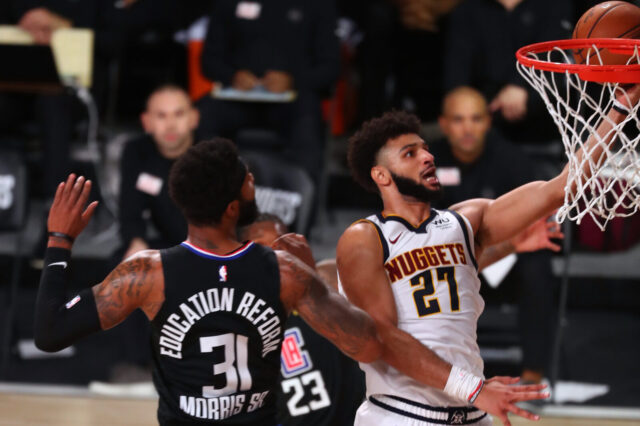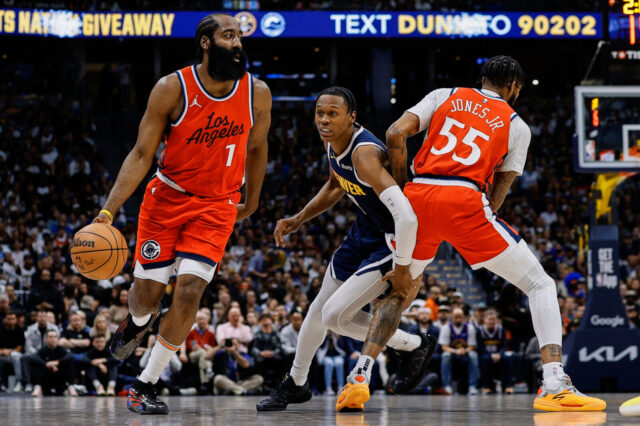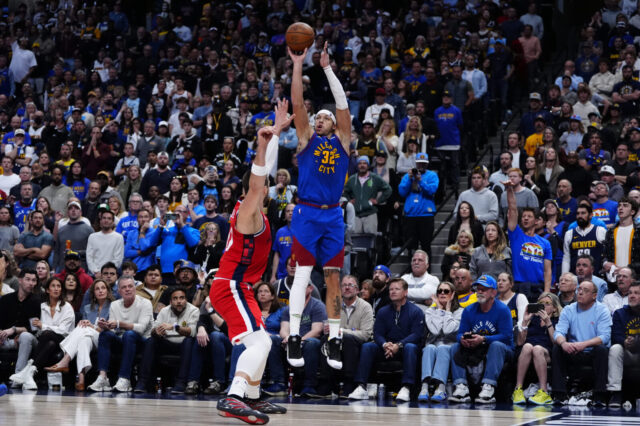In the NBA, the label of promising young guy with upside can vanish fairly abruptly. Players seem to go from rookies with unlimited potential to guys who just “are who they are” rather quickly, and sometimes without warning. Perhaps no one in the league exemplifies this phenomenon more than Kenneth Faried.
It was just two seasons ago that Faried was the surprise second year player with unlimited potential, starting for a 57-win team. His raw skill set was trumped by his impressive speed and endless motor. Fast forward to today and Faried is about to begin his fifth season in the NBA. At 25 years old, Faried will be a veteran presence on a young Nuggets team that will enter training camp with, at least, 10 players younger than him.
The Manimal’s game is still a work in progress and both his FG% and his TS% have fallen each season that he has been in the league, despite only a marginal increase in usage. Some of those drops in efficiency correlate directly with the time Faried spent under head coach Brian Shaw. Under George Karl, Faried was used more as a hustle guy, cleaning up the offensive glass and sprinting down the court in transition. Under Shaw, Faried was expected to develop as a half court threat on offense, especially as a post up scorer.

While he never developed a skill set that would make him a major half court scoring threat, his athleticism and energy alone earned him a hefty extension from the Nuggets who are banking on the hope that Faried has yet to reach his potential. The addition of new head coach Michael Malone may also re-ignite Faried, especially if the team is able to focus on the things that Faried does best.
Offense
As far has half court offense goes, it’s entirely possible (even likely) that Faried “is who he is” at this point. Last season, he scored an impressive 1.03 PPP as the roll man in pick and rolls, a number high enough to make him a legitimate threat as the screener in pick and rolls. He also drew fouls in pick and rolls at a higher rate than Denver’s other main options at power forward: J.J. Hickson and Darrell Arthur.
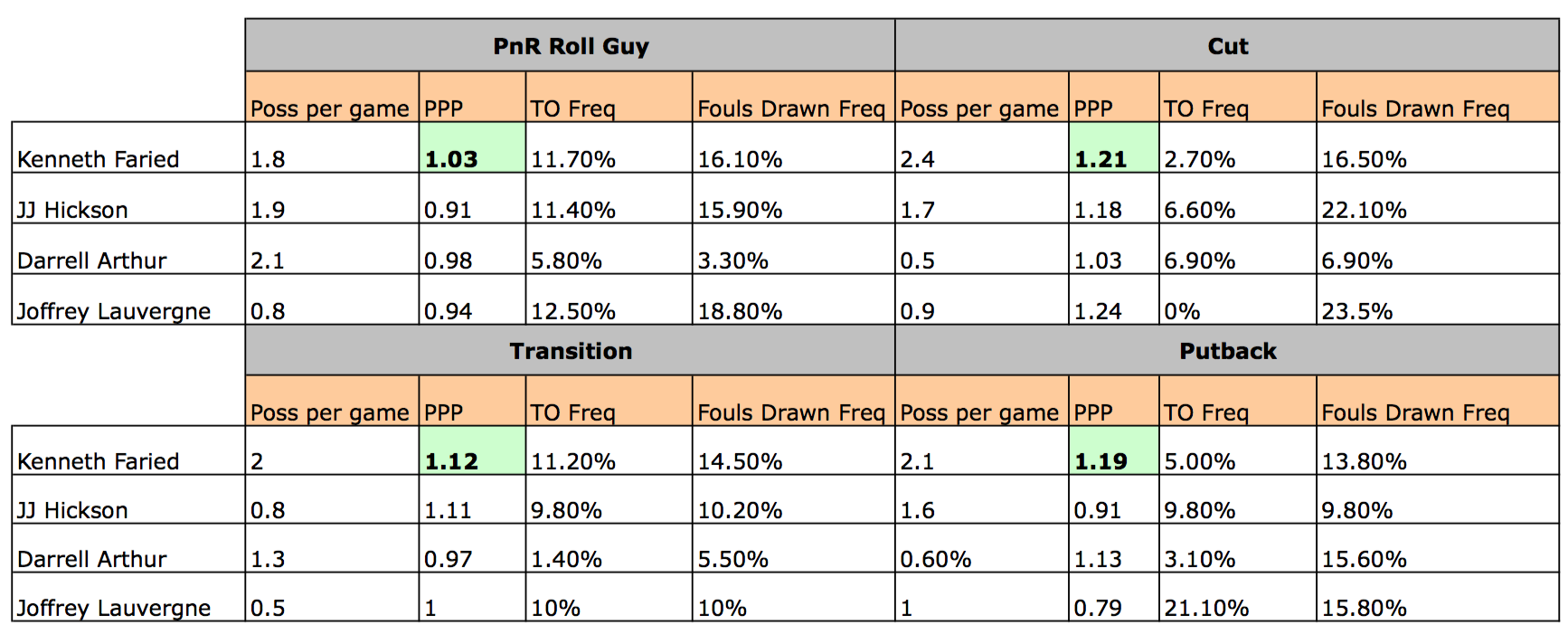
However, he provides virtually no spacing as a spot-up shooter, scoring at a team worst rate of 0.38 PPP on spot-ups. He also had a team worst 14.7% turnover rate on spot-ups, a sign that he is uncomfortable catching the ball in catch and shoot situations. Faried scored a dismal 0.69 PPP on post-ups last season despite being the most frequent post-up shooter on the team. Perhaps no statistic is more telling of Shaw’s failed and inflexible offensive philosophy than Faried’s consistently poor post-up percentages.

Despite his poor post-up and spot-up numbers, Faried was incredible in transition opportunities, scoring 1.12 PPP. He also scored 1.21 PPP as an off-ball cutter, and 1.19 PPP on putbacks. Simply put, Faried is a productive offensive player in transition and in the half court when you take the ball out of his hands.
This isn’t a backhanded compliment. There is great value in players that can score off-ball and players like Faried can be incredible weapons when used properly, and when surrounded by the right talent. Tyson Chandler, Tristan Thompson, Brandon Wright, and DeAndre Jordan are all guys that help make their respective team’s offense more deadly simply by rolling hard to the rim, cutting off-ball, and attacking the offensive glass. An athletic big that rolls hard to the rim creates a lot of gravity in the paint and can help open up lanes for kickouts and open jump shots.
While he is very good as a screener, Faried is certainly not a finished product. Ball screens are among the most subtle arts in all of professional basketball and few bigs are able to make quick reads about when to set a flat screen, a side screen, or any other type of screen. A player must read multiple defenders very quickly in order to know which type of screen will work best. It would take an incredible sales pitch from Malone to convince the second highest paid player on the team to work on ball screens and not post-ups, however the team would likely benefit from Faried becoming a Tim Duncan-level ball screener.
There is a lot of value in knowing what you are and what you are not. Players love having the ball in their hands as often as possible. For Faried and for Malone and the Nuggets coaching staff, it might be best to place Faried in situations where he has proven he can succeed, and not in post-ups, isolations, or spot-ups.
Defense
Faried has discussed his desire to improve defensively this season and with a defensive minded coach in Malone, there is a great opportunity for him to have a breakout year defensively. Faried has the physical tools necessary to become a versatile defender, especially on pick and rolls. Long limbed forwards with quick enough feet who can contest guards on switches are en vogue in today’s NBA. Look no further than the NBA finals for examples of power forwards (Thompson and Draymond Green) who cover guards in short stints when situations arise for them to switch out on the perimeter.
Faried also has the quickness to blitz screens and/or hard hedge screens beyond the three-point line. A hard hedge is when the defender goes out above the screen to force the ball handler to take a longer route off of the screen. It requires incredible speed and timing to execute properly, both to get in position to hedge and to recover once the defender guarding the ball fights through the screen. Faried is a rare example of a forward with the speed to execute it properly and if he improves his technique and buys in to the extra workload on the defensive end, it could be a very valuable tool for the Nuggets defense.
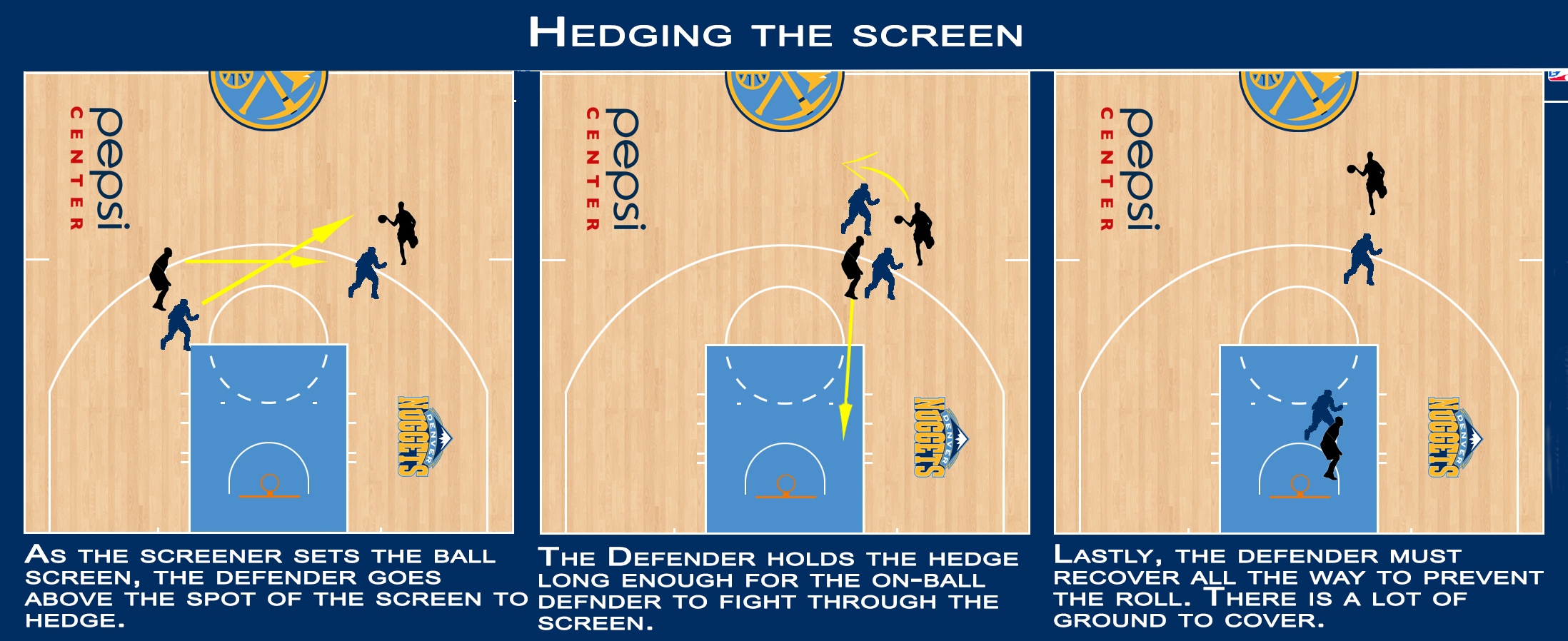
Generally speaking, Malone’s defensive principles in Sacramento were relatively conservative. In pick and rolls, bigs would typically drop to protect the painted area at the expense of rarely forcing turnovers. Shaw also liked to have Faried drop back in pick and rolls, often to some fairly miserable results. But that style of conservative defense is more tailor suited for taller, bigger, and more lumbering bigs like DeMarcus Cousins and Carl Landry. Jusuf Nurkic, for example, should thrive as a deep drop back center, and we should suspect he will be used this way.
Faried can become a much more versatile defensive weapon, especially when paired with a rim protecting big like Nurkic. By unleashing the Manimal on pick and roll defense, the Nuggets may be able to speed up the tempo, force turnovers, and create transition opportunities; a trait that will be crucial for them to put together a decent Offensive Rating (ORtg). Malone has repeatedly mentioned wanting to use defense to create offense and one of the best ways for a team like Denver to create transition opportunities is by aggressively trapping the pick and roll with Faried.
All players have strengths and weaknesses. If given the choice, most players would prefer that their strengths be isolation scoring and protecting the paint. Asking a star player to be the opposite of that is certainly a hard sell. Despite two consecutive seasons of underperforming expectations, Faried still has the potential to be one of the leagues most versatile front-court pick and roll defenders and off-ball scorers. Hopefully, that’s a potential that he is interested in achieving.
